Malts and blends were at a fever pitch at this year’s Whisky Live Beirut as spirit aficionados assessed the current market and launched a few future stars. Experts and brand ambassadors attending the show gave us a heads up on what’s here and what’s to come.
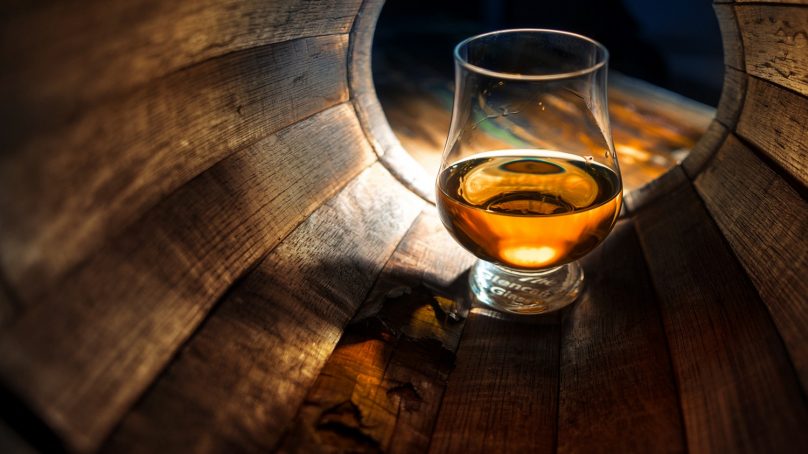
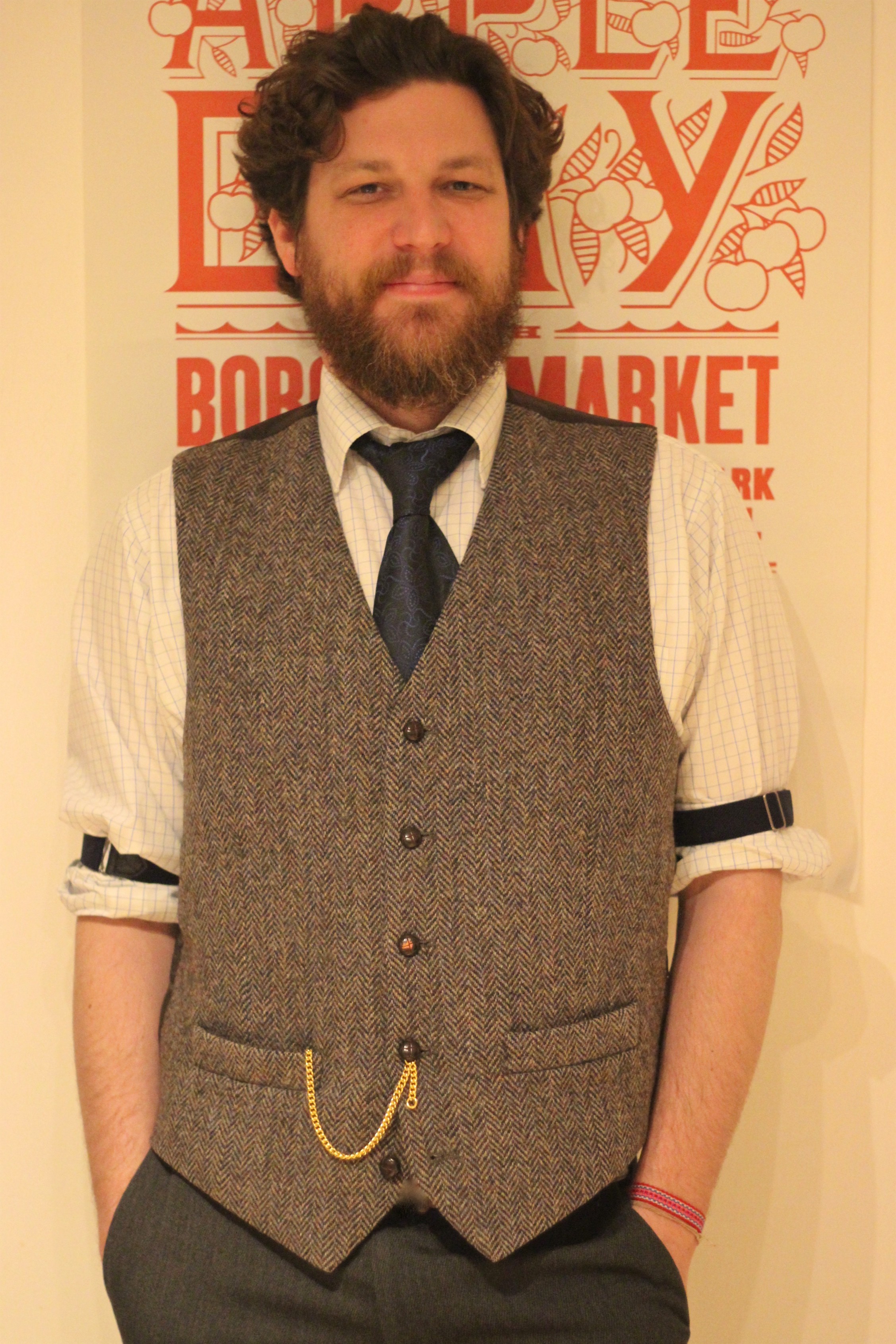
Rob Allanson, global ambassador for Whisky Live
INNOVATIVE THINKING AND GAME CHANGERS
Right now, the global whisky industry is a weird market where everything is growing in different, but interesting ways. Irish whiskey is on fire, as evidenced by its tremendous growth. Bourbon is also growing, so much so that manufacturers are barely keeping up with demand, as is the case with ryebased and Japanese whisky.
Even blends, which a few years back appeared to have plateaued, are making a return. Another talking point is the younger generation’s demand for better quality whisky and it will be interesting to see how the market shifts toward accommodating such demand. This will inevitably lead to a sharper focus on more premium offerings at even lower price points than currently available.
Another interesting development, which is proving quite difficult to accommodate, is the demand for nonalcoholic drinks. While whisky cannot provide the answer, some producers are responding with new products offering much lower alcohol by volume (abv) content of about 15 percent, which is closer to wine. In addition, there is a trend which involves focusing on the flavor of whisky rather than its rarity or age. One major development is the relatively recent decision of alcohol giant Diageo to buy a major stake in the world’s first distilled non-alcoholic spirit maker Seedlip. That move is a literal game-changer, signaling a new direction in moving forward when it comes to demand for premium nonalcoholic drinks.
As a result, this age-old craft, dating back hundreds of years and rooted in tradition, is revealing some innovative thinking, with many surprises emerging that had not been forecast. Just recently, Glenlivet, the original Speyside single malt Scotch owned by the French alcoholic beverages company Pernod Ricard, launched edible ‘cocktail capsules’ made of seaweed. In so doing, they broke the rule on how whisky is to be enjoyed, showing that it is no longer about maintaining tradition, but rather having a fun experience, in which whisky has become a key player. While this is another marketing gimmick, as are many of the immerging initiatives, it nonetheless recalls the issue of sustainability, which is playing an ever bigger role in both whisky and the broader F&B industry.
The number of new distilleries coming online is staggering; even here in Lebanon, the production of Athyr – the country’s first single malt whisky – is interesting. You now also have a few Japanese whiskies made from rice, which has prompted discussions on the question of how you categorize rice as whisky. Yet another innovation is lab-made whisky, which is equivalent to the search for the Holy Grail of alchemy in whisky-making. For me personally, however, there is no substitute for nature. But while there may be a romantic notion to it, there is also plenty of chemistry happening. People have tried to find ways to make whisky mature more quickly, but it simply doesn’t taste the same. Of course, it’s great that we can achieve such results, but that makes me question whether science is adding anything to what nature already does. Perhaps this all stems from the ‘because I can’ factor. There’s no doubt, though, that all these experiments are adding to our knowledge of whisky-making and I’m sure they will prove beneficial on many levels in the years to come.
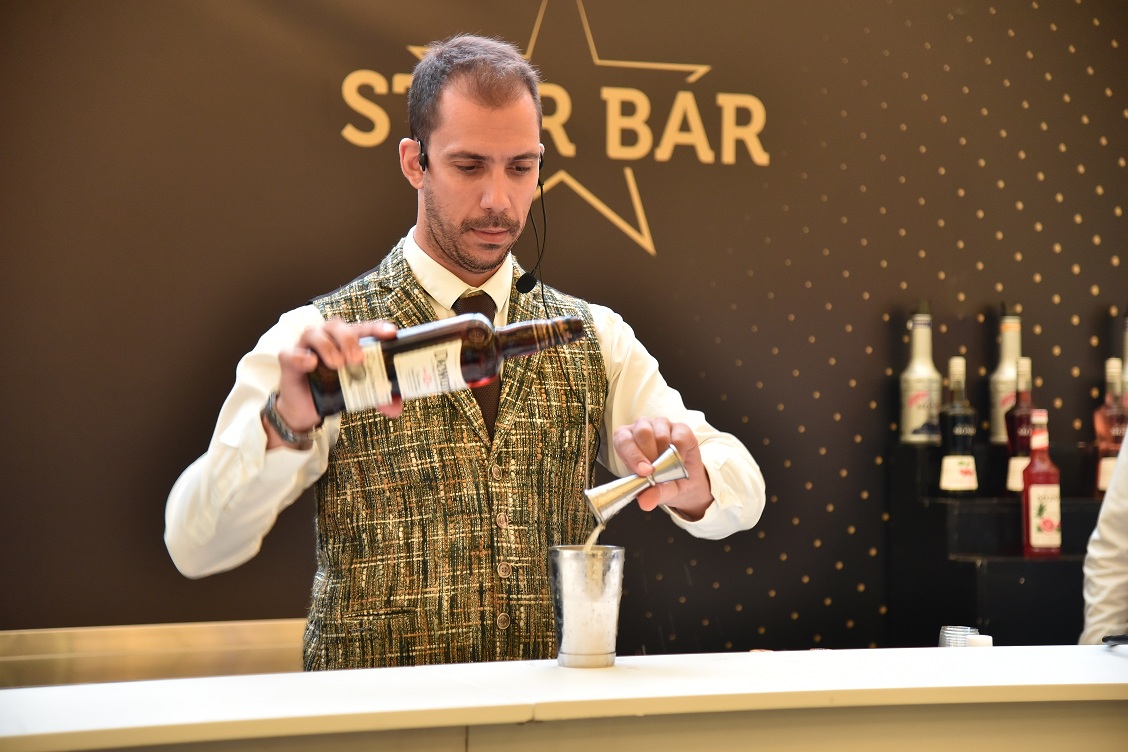
Alexander Sourmpatis, bar and beverage manager at Casablanca Social Club, Greece, Instructor at Bar Academy Hellas
SHAPING COCKTAIL CULTURE
When it comes to mixology, consumers are going back to their roots by revisiting classic cocktails and adding their own twists. Though there is still plenty of innovation, this seems to have plateaued after reaching its limit, including what could be achieved using the tools available to us, ranging from the basic all the way through to the highly scientific. In other words, bartenders can no longer put their tools to better use than they are already. Looking at the world’s top three spirits used today in cocktails, rum is leading the pack, with vodka in second place and paying the bills, while whisky is making a great comeback.
On the academic front, we have taught future bartenders all our drinkmaking techniques and are currently working on diminishing the level of waste generated, which is a major area of focus. The other matter, which is more important and will play a big role in the shaping of the prerequisites of tomorrow’s bartenders and mixologists, is learning the fundamentals of the hospitality industry. Preparing beverages is one of the two pillars of the drinking-out experience, which potential candidates can teach themselves. However, reading about the hospitality industry will do little in that regard. This side of the business can only be taught using experience coupled with daily practice. The role of bartender has moved from knowing the ingredients and the many ways of using them to understanding the needs of the customer and offering the best result-based experience. Ironically, it should have been the other way around, but somewhere along the line, we forgot about the customer and focused on refining the knowledge. In my mind, an advanced robot could, in all likelihood, achieve the latter; however, what a robot cannot do is make a customer feel comfortable and welcome. The biggest challenge, on that front, is teaching a bartender to read a customer, simply because that kind of profiling is not based on a set of predefined rules. The parameters are continuously shifting, because it is humans we are talking about, not bottles or glasses. The known limits in that human equation are how far one can go with what is available behind the bar. The trick is to accurately interpret the space the customer allows the bartender, which is where the entire proposition either evolves, remains constant or diminishes. The mistake many bartenders make is acting on the notion of what they think the customer wants rather than what the customer needs.
I have also noticed how the markets in the Middle East and Cyprus are growing in terms of consumption levels and demand for quality. Previously, none of these markets had a broad range of quality spirits. However, producers have been paying them greater attention and are now introducing more premium products for a richer range of offerings. As a result, consumers are increasingly aware that there is more to explore and skilled bartenders have the tools to accommodate.
In Greek, the word cocktail means ‘luxurious product’, but luxury in Greek means ‘asking for many things’. If a customer orders a cocktail, therefore, they are expecting plenty of variety. On the other hand, a person who only orders whisky has very specific and clearly defined needs that can be met easily. In contrast, the cocktail drinker is asking for a more complex, evolving proposition as opposed to maturing. To draw a modern analogy, a whisky drinker, while driving, will follow the route a digital mapping assistant recommends, while the cocktail drinker will explore alternative ways, even paving one that doesn’t feature on the map.
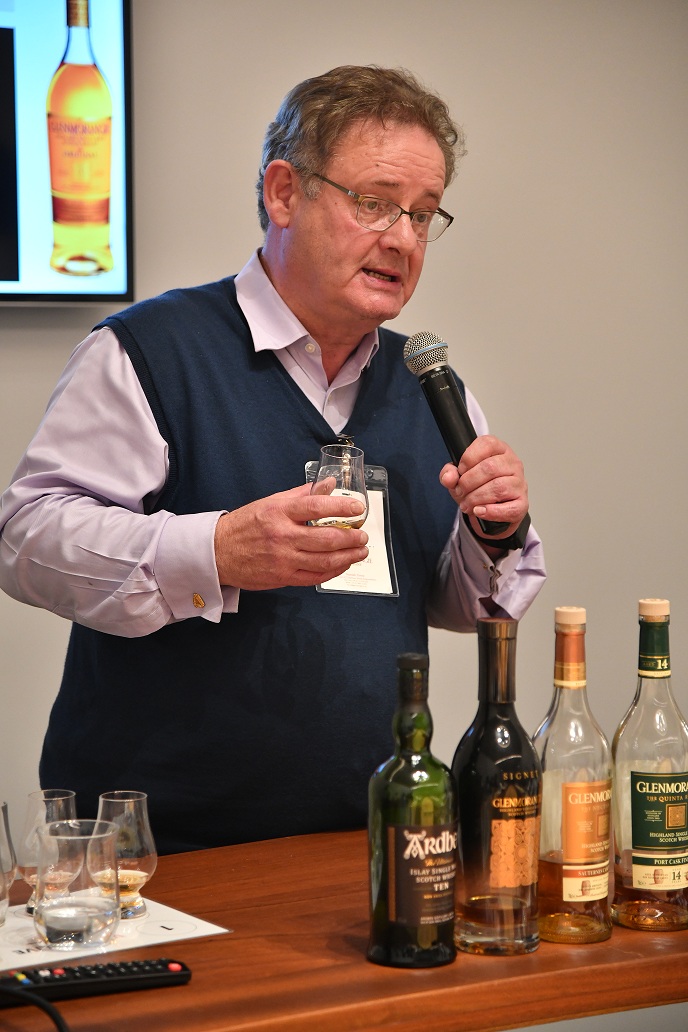
Hamish Torrie, global brand ambassador, Glenmorangie
THE ‘RICH AND REACH’ STRATEGY
We have been part of Whisky Live Lebanon from the very beginning because we believe Africa and Middle East are the future markets for the brand. As a producer of Highland single malt Scotch whisky, we consider Beirut to be the lighthouse for the work we are doing in the region. The country affords us a fairly accurate indicator of market potential, which continues to prove very promising. Keep in mind that the diaspora of Lebanon is enormous, and it is my thinking that if I can influence people here, I might have global evangelists promoting the brand the world over, which I believe is a good strategy, though only time will tell.
The bottle, among the other varieties we are showcasing here, is called Signet, a single malt featuring no age statement, produced using a blend of some whisky over 30 years old. Last year it was informally mentioned as the whisky of the show, and this year also garnered attention as the bottle that ‘could not be gotten’. This is a great metaphor for market demand in the sense that single malt is collectible, rare and not produced for mass-market consumption. That is why the whisky we are making today is to the benefit of the next generation of drinkers. In that sense originally, our brand is light, delicate, smooth and delicious. I see it as an elegant, sophisticated young individual who is quite refined, yet approachable.
From a marketing perspective, other brands boast their superiority in an arrogant way, yet our thinking is different in that we have a similar status, yet are more accessible. That is part of our strategy, which thus far has proven successful in growing the brand in an appealing way to a diverse range of drinkers. It has plenty of aspiration, yet is not a closed door. In parallel, you have some fashion brands that are intimidating to consumers who have the means, but lack the knowledge and confidence, to walk through those huge doors. Admittedly, single malt whisky could be intimidating for newcomers to break into, but we pride ourselves in being open to everyone willing to take the plunge and will leave drinkers with an inexplicable fission of pride for having become part of the brand. I am not saying that once a person tries our brand that will be all that they drink. What I am saying is that once that happens, the brand will become part of that person’s repertoire.
In terms of marketing the brand, the world is becoming litigious, which, due to the existing regulations imposed by various markets, we have to address. What we can advertise or say in one region, we cannot do elsewhere. The best way for us to promote our whiskies, therefore, is to impart the knowledge of it through what we call prescriptors (independent individuals and professionals) who spread the word because they truly enjoy the product rather than being paid to promote it. In other words, it is not about big advertising, rather visibility at the point of sale. This is based on creating a very rich story, then leveraging that with the amount of people we can reach. On the other hand, while you can get plenty of reach by supporting huge events, what we want is quality reach, based on loyalty as a personal preference. What drives this movement is the one-toone engagement that has an inherent trickle-down effect. To that end, we believe and focus on duty-free divisions, which we call travel retail platforms. These are vehicles that allow us to unify our offering through a unique visual component ensuring a top of mind type of awareness. Simply put, irrespective of where a traveler may find him or herself, they will always be home with us.
The other lure the brand enjoys is novelty and we employ some psychology in our approach and presentation by getting the consumer to constantly wonder what new product we have on offer. In so doing, we create desire and a more loyal following of individuals who constantly want to be in the know for fear of missing out. In that context, innovation is key. For instance, some 10 or 12 years ago, without my knowledge, our fantastic whisky team managed to culture, in-house, a form of yeast from our own barley fields which companies usually buy from third-party manufacturers. This was done in secrecy to avoid creating false expectations. Out of that, a fantastic range of whiskies was born that is earthy, with trufflelike notes. Looking to 2020, we have an exciting innovation stream ready to flow and we hope this will get further attention for Glenmorangie among malt whisky aficionados. It’s always about building for the future and we know that takes time!
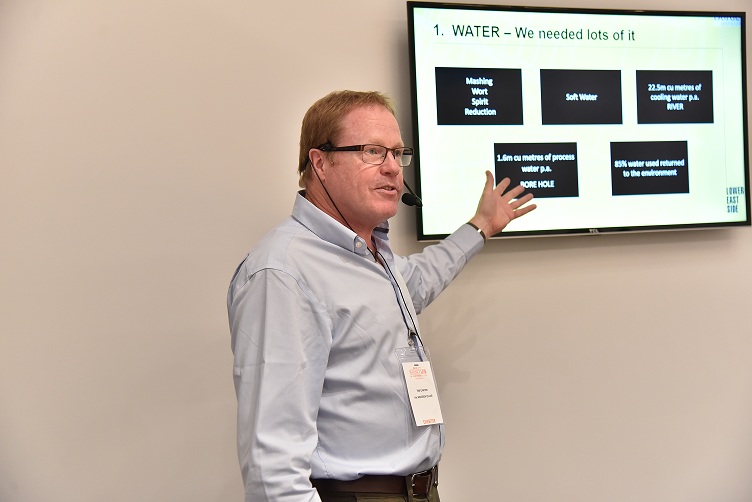
Tim Carton, Lower East Side, founder and director of The Borders Distillery
ON THE BORDER OF LEGACY AND TRADITION
We are the first distillery to exist and operate in the Scottish borders since 1837. In effect, there had been no manufacturing of Single Malt Scotch Whisky in the region for over 180 years until we commissioned The Borders Distillery in March 2018. In the 1800s, excise taxes were invented and, given many people could not afford to pay, much of the distillation would have been illicit.
Consequently, manufacturers either dissolved or relocated to the highlands and islands to avoid the inspectors. We opted for the Scottish Borders to revive its distillation heritage. There is plenty of good water flowing there with minimal iron and calcium content, just as required to make Single Malt Scotch Whisky. This is especially important because you need a great deal of water to produce whisky. We are located in a town called Hawick, famous for manufacturing cashmere and tweed, both of which require even more water than whisky, so we knew we’d find a plentiful supply here. Since opening, things have been action-packed. We are currently operating at some 40 percent capacity, focusing on calibrating quality and innovation as we gradually scale up. Although the market for single malt is quite large, our brand will not be ready for at least another 18 months, since legally the spirit needs to rest in the barrel for at least three years and one day to qualify as Scotch Whisky. In fact, we plan to keep it in the casks for longer – at least five years and beyond – since we believe this will deliver the fine quality and distinctive features we seek.
Our Lower East Side Blended Malt Scotch Whisky is a shining light for us. It comprises several carefully selected single malts which we blend to our recipe. Consumer reactions give us confidence that we have a great product. As is common practice in the industry we swap some of our young spirit for already matured single malts, which we then blend ready to bring to the market. Our own single malt whisky meanwhile slumbers in cask to eventually attain our desired house style: fruity, floral and nuanced with layers of vanilla and spice.
Yet despite everything that has been accomplished to date, the greatest challenge is neither sourcing ingredients nor employing technology, but rather being patient. For example, our fermentation process takes 85 hours rather than what could be 45 to 55 hours, to ensure a fruitier more floral wash as opposed to what would otherwise be nuttier taste.
We also distill slowly even though time is money, because we want a finer liquid containing fewer impurities. Furthermore, we use many fresh bourbon casks, as well as sherry, rum and red wine varieties, since having this choice enables us to monitor our liquid’s development. Again, this process will cost us more and requires patience, but the significant appreciation of our liquid will be the reward.
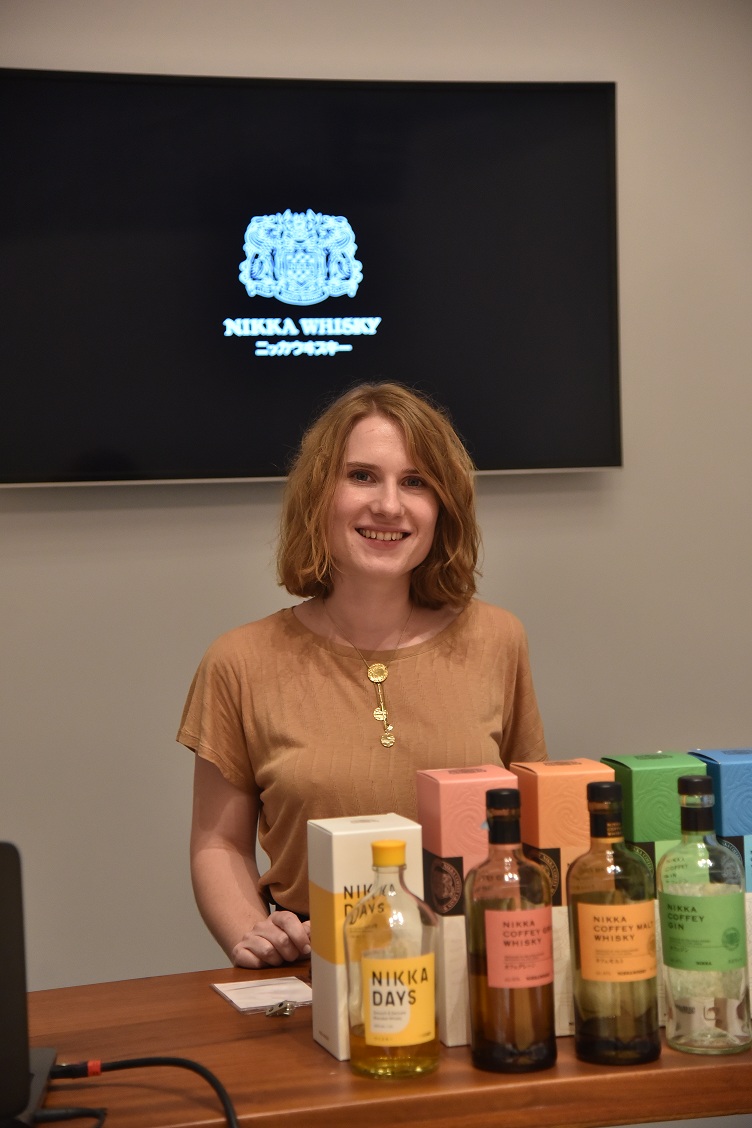
Clémence Viault, brand ambassador, Nikka Whisky
A PERFECT BLEND OF EAST AND WEST
The story behind the creation of this brand is truly an inspiring one, dating back to 1918, when a young Japanese man named Masataka Taketsuru traveled to Scotland to learn the secrets of whisky making. He not only became the Father of Japanese whisky, but also ended up marrying a Scottish woman. One of the visual elements that distinguishes the brand is the square bottle, which was specifically designed in 1985 to be reused. Another striking factor is its 50cl size, which was previously unheard of and again, has its roots in practicality and space constraints. What sets Nikka apart is that it blends the two contrasting cultures of East and West.
The brand also offers a number of options when it comes to malt and grain whiskies, either single, blended and aged. Keen to tap into evident enthusiasm for whisky amongst the new generation, the brand has also introduced Nikka Days, a playful, almost summer-like whisky that is light, yet also complex. Comprising a blend of malt and grain whiskies, it represents one of the company’s most vibrant additions to the range. The combination of zesty and floral flavors, with underlying subtle toffee and vanilla notes wrapped in light peat smoke, constitutes an ideal offering to young drinkers who are keen to venture into the world of unique whisky without having to navigate its complexities from the get-go.













